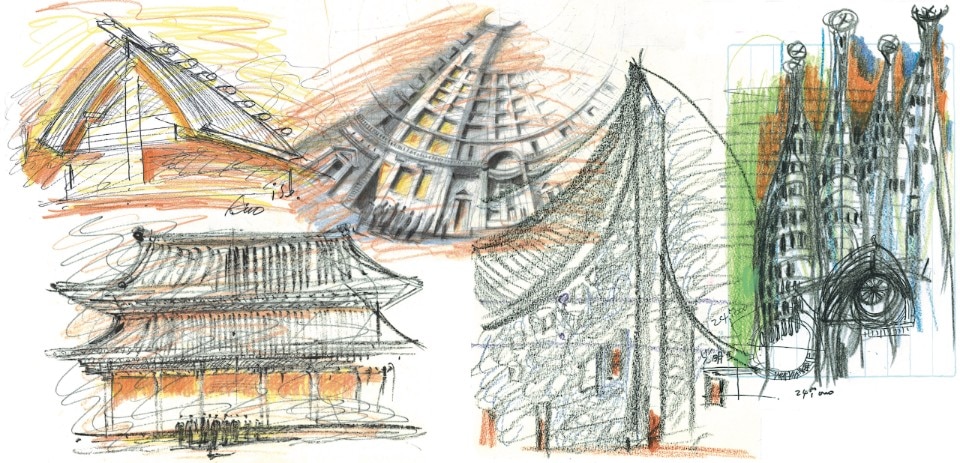All things must one day weather and crumble. It could be said that architectural history is a trajectory of challenges against this truth in search of the eternal.
I would like to make eternity, an idea that humans have been pursuing since time immemorial, the theme of Domus 2021. Eternity here does not refer to the physical continuation or perpetuation of matter and form. Rather, it indicates the intangible emotions and memories that live in the hearts and minds of people. Eternity’s universal nature is not innate but reliant upon humanity. Collective ideas of eternity sprout in response to the era’s atmosphere and continually blossom with the cultural nourishment produced by growing communities. Hence, these thoughts are forever preserved in our hearts and spirit. In other words, eternity is the product of an evolving zeitgeist.
It is exceedingly difficult to understand what defines our era. The changes in the past ten years have been immensely rapid. Endless and drastic progressions in information technology have swallowed all of human society in the name of globalism, with network systems interwoven in every aspect of our daily lives. The Covid-19 pandemic, which forces people to implement social distancing as a countermeasure against virus infection, has accelerated these trends. We are in the middle of an upward sloping graph of significant change, like the industrial revolutions of centuries past.
These shifts will likely continue to intensify and create a new world that we cannot even begin to fathom. Architecture and design will likely undergo a remarkable transformation in industrial structures, production systems and methods of expression.
The signs of these changes are already evident. As drastic as these changes may be, the fact remains that human beings are part of nature. We are flesh-and-blood, ephemeral beings who delight in communion with others and live by our memories.
Thus, the essential value of architecture must stay unchanged, to create a habitat for the human spirit, to hold memory and history, and to foster culture through the urban landscape. It is precisely because the future is uncertain that we need to look at the very roots of creation, its eternal origins.
Opening image: drawing Tadao Ando. Ise Jingu (Ise, Japan); Nandaimon of Todaiji (Nara, Japan); Pantheon (Rome, Italy); Notre-Dame du Haut (Ronchamp, France); Sagrada Familia (Barcelona, Spain).


